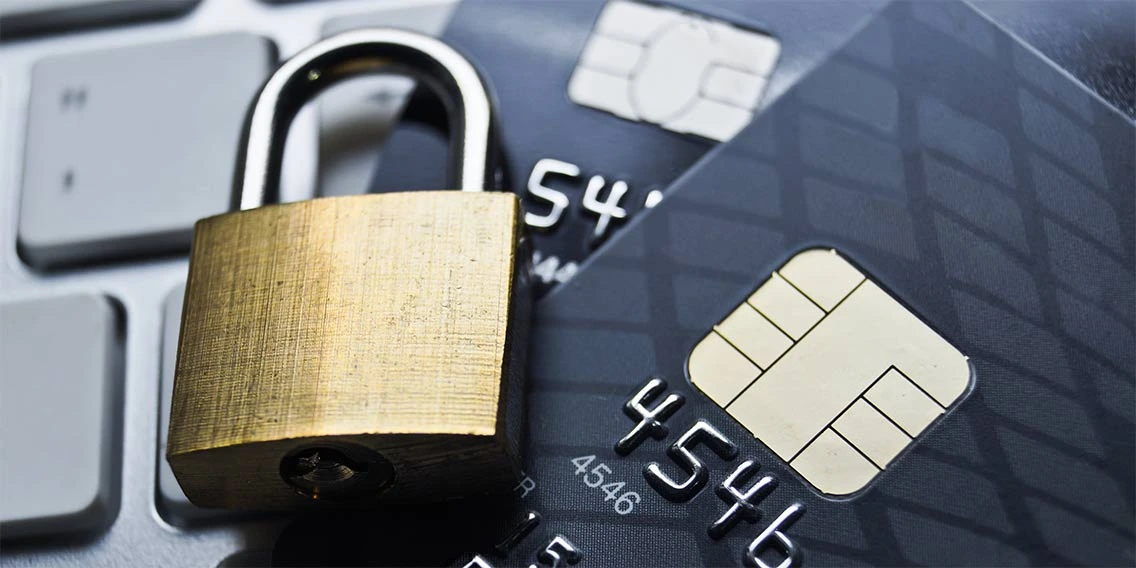FINANCE
What is a Digital Wallet and How Does It Work?
EXPECTED READ TIME: 6 MINUTES
With debit cards, credit cards, cash, IDs, and more, it doesn't take much to be stuck carrying around a George Costanza wallet. If you want to keep a manageable wallet without sacrificing convenient payment options, a digital wallet might make sense for you.
Here's an overview of what a digital wallet is and what to consider if you're making the switch to contactless.
What is a Digital Wallet?
A digital wallet is an electronic form of your financial accounts that you can access from your smartphone, other smart devices, or computer. So with a digital wallet, you have electronic versions of your debit and credit cards. You can use most digital wallets to make contactless payments without cash — or your physical wallet.
Many digital wallets can also be used for requesting or transferring money and for storing other traditional wallet essentials, such as transportation passes, event tickets, and your driver's license. If you use your digital wallet smartphone app, you can also withdraw cash from many ATMs. Overall, you can use your digital wallet (also sometimes called an e-wallet) for in-store, online, and within-app purchases.
Types of Digital Wallets
In the heyday of physical wallets, you may have chosen wallets for different reasons — fashion, function, or even price.
In terms of options, that translates to how you can choose from different types of digital wallets based on your needs and preferences. According to users, these are some of the top-rated options and their distinctive features:
Google Pay:
- Enhanced security
- Easy individual and group transfer function
- Supported by a variety of major banks
- Broad global availability
Apple Pay (for iPhone and Apple Watch users):
- User-friendly preinstalled Wallet iPhone app for quick, easy access
- Upped security features
- Widely accepted form of payment
- Transaction history feature can help you stay financially on track
PayPal:
- Long-established and reputable
- Streamlined steps for quicker transactions
- Can be used to buy and sell cryptocurrency
- Lets you send money to or request funds from family and friends
Venmo:
- Allows peer-to-peer payments for splitting expenses
- Convenient transfer feature
- User-friendly
- Cash-back rewards with select retailers
Samsung Pay (for Samsung users only):
- Accepted almost anywhere — even at stores with older card terminals
- Easy activation due to preinstalled service on many Samsung devices
- Permits you to add your PayPal account to the mobile app
- Quick, secure transactions
How to Use a Digital Wallet
You'll soon discover how effortless using your digital wallet can be, but first, you'll need to activate it. Some services are preinstalled, for example, in certain Apple or Samsung devices.
Otherwise, you can search your device's app store to find your digital wallet application of choice. Once you find the digital wallet app you want, you can download it to your smartphone or computer. Then, you can load the cards you want to use for payments to the app. From there, you're ready to go. Take a look at some of the different ways you can use your card.
In-Store Purchases
Let's say you're in a store and you go to the checkout line to pay. Instead of ransacking your purse or pockets for your wallet, you simply take out your phone, and then you:
- Make sure the card terminal has near-field communication (NFC), which signals communication between your phone and the reader so your payment data can be transmitted. You'll know if the card reader has NFC if you see a horizontal Wi-Fi symbol on it, which verifies contactless functionality. You can also look for your digital wallet app logo on the reader.
- Hold your phone with the back facing close to the reader. Your digital wallet app should automatically open to initiate and complete the transaction.
Online Purchases
Shopping online with your digital wallet is quick and seamless. When you've added items to your cart and you're ready to check out, just see if your digital wallet logo is a payment option. If so, click on it to complete your transaction.
In-App Purchases
When you purchase something within an app, that simply means you buy content, services, or additional features while using an application on a device such as a tablet or smartphone. This kind of purchase could include anything from mobile games to food delivery services.
Are Digital Wallets Safe?
Yes, digital wallets are safe. They're equipped with security features that can help prevent financial fraud. And since most digital wallets use NFC for transactions, merchants won't have access to your credit or debit card number, nor will your card number be stored on your device or transferred over the Internet.
Encryption and Tokenization
Furthermore, because of encryption and tokenization, digital wallets are considered more secure than physical cards.
When data is encrypted, it's encoded so it can only be read by someone who's authorized to access it. Regarding your digital wallet, any personal information you add to it is converted into a code that only you, or anyone you give authorization, can access.
Tokenization turns encrypted data into a token or series of characters that have no significant value. If the data were to be imposed, a hacker wouldn't be able to trace back to the original data.
Two-Step Authentication
Keep in mind that accessing your digital wallet from your phone involves unlocking your phone. If you set up two-step authentication, unlocking your phone will require a password and often a biometric factor, such as fingerprint or face ID, as an extra layer of security.
There are other steps you can take to help prevent digital wallet fraud if your phone or device gets lost or stolen. If you contact your credit card company, you can request to put a freeze on the cards in your digital wallet, just like you would for physical cards. You can also find a variety of apps that let you remotely lock or erase information on your phone.
Pros and Cons of a Digital Wallet
Using a digital wallet has both advantages and disadvantages. Some of them to consider include:
Digital Wallet Benefits
Here's a list of the advantages you receive by using a digital wallet:
- Convenience: Digital wallets are easy to use, the payment process is quick, and you won't have a paper trail with receipts and other items.
- No account required: Users don't have to open an account with a financial institution to have a digital wallet, which helps create a broader element of financial inclusion, especially for those in lower-income or rural communities or developing nations.
- Security: Encryption and tokenization provide levels of enhanced security for digital wallets.
- Speed: Digital wallets offer a streamlined process for online purchases because you're spared the step of entering your card information.
- Earn rewards: With a digital wallet, users can still earn points and bonuses through rewards programs.
Digital Wallet Drawbacks
Here's a list of the disadvantages that come with using a digital wallet:
- Not accepted everywhere: Although digital wallets are becoming an increasingly common payment method, not all places and sites accept them.
- Potential fees: Certain types of digital wallets have fees for transfers and other services.
- Phone required: Since most consumers with digital wallets use their smartphone for transactions, their reliance simply shifts from a physical wallet to a phone.
- Battery power: Again, for those phone purchases, you need to keep your phone charged. You won't be able to pay if your phone runs out of power.
Going Digital
Letting go of your beloved physical wallet — bulky as it may be — is a big decision to make. If you're ready to make the leap to a digital wallet, you can enjoy the convenience of a streamlined system for making contactless payments, transferring money, shopping online, storing tickets, boarding passes, and so much more.
How to Start Using a Digital Wallet
See the steps of how to enroll in the digital wallet of your choice.




